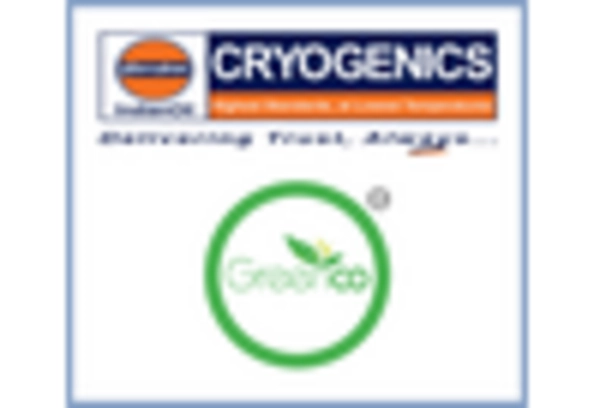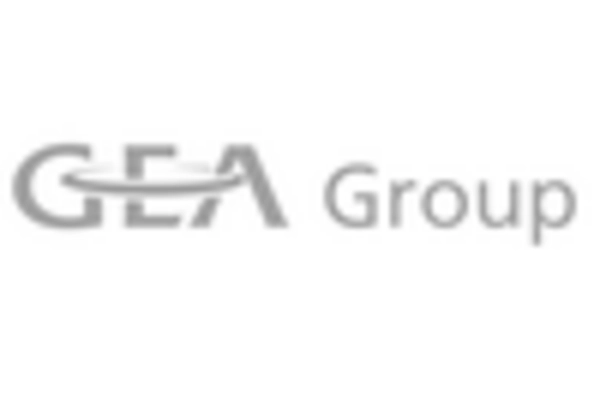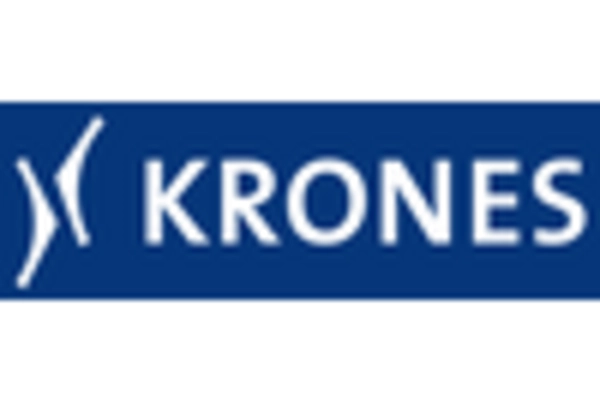Rising Demand for Convenience Foods
The Individual Quick Freezing Equipment Market is significantly influenced by the rising demand for convenience foods. As lifestyles become busier, consumers are increasingly seeking ready-to-eat and easy-to-prepare meal options. This trend is reflected in the growing sales of frozen foods, which are projected to reach a market value of over 300 billion dollars by 2026. The ability of individual quick freezing technology to preserve the freshness and quality of food products makes it an attractive option for manufacturers. Consequently, food processing companies are investing in advanced freezing equipment to meet this demand, thereby driving growth in the market. The convenience food sector's expansion is likely to continue, further bolstering the Individual Quick Freezing Equipment Market.
Expansion of Food Processing Industry
The Individual Quick Freezing Equipment Market is benefiting from the expansion of the food processing sector. As the global population continues to grow, the demand for processed and frozen foods is increasing. This trend is prompting food manufacturers to invest in advanced freezing technologies to enhance production capabilities and meet consumer needs. The food processing industry is projected to grow at a rate of 5% annually, which is likely to drive the demand for individual quick freezing equipment. Additionally, the need for longer shelf life and improved food safety standards is pushing manufacturers to adopt quick freezing methods. This expansion is expected to create new opportunities for equipment suppliers and contribute to the overall growth of the market.
Increasing Focus on Food Safety and Quality
In the Individual Quick Freezing Equipment Market, there is an increasing focus on food safety and quality. As consumers become more health-conscious, the demand for high-quality frozen products is rising. Quick freezing technology plays a crucial role in preserving the nutritional value and safety of food items. Regulatory bodies are also imposing stricter food safety standards, which necessitate the use of advanced freezing equipment. This trend is likely to drive investments in individual quick freezing technologies, as manufacturers seek to comply with regulations and meet consumer expectations. The emphasis on food safety is expected to propel the market forward, with a potential increase in demand for high-quality freezing solutions in the coming years.
Sustainability Initiatives Driving Market Growth
In the context of the Individual Quick Freezing Equipment Market, sustainability initiatives are becoming increasingly pivotal. Manufacturers are focusing on developing energy-efficient equipment that minimizes environmental impact. The adoption of eco-friendly refrigerants and energy-saving technologies is on the rise, aligning with global efforts to reduce carbon footprints. This shift is likely to attract investments, as companies seek to comply with stringent environmental regulations. Furthermore, the market is witnessing a growing demand for sustainable practices among consumers, which is influencing purchasing decisions. As a result, the emphasis on sustainability is expected to propel the market forward, with projections indicating a potential increase in market size by 10% over the next few years.
Technological Advancements in Freezing Equipment
The Individual Quick Freezing Equipment Market is experiencing a surge in technological advancements that enhance freezing efficiency and product quality. Innovations such as cryogenic freezing and advanced refrigeration systems are being integrated into equipment, allowing for faster freezing times and reduced energy consumption. This is particularly relevant as the market is projected to grow at a compound annual growth rate of approximately 6.5% over the next five years. Enhanced automation and smart technology are also being adopted, enabling better monitoring and control of the freezing process. These advancements not only improve operational efficiency but also ensure that the nutritional value and texture of food products are preserved, thereby meeting consumer expectations for high-quality frozen goods.

















Leave a Comment